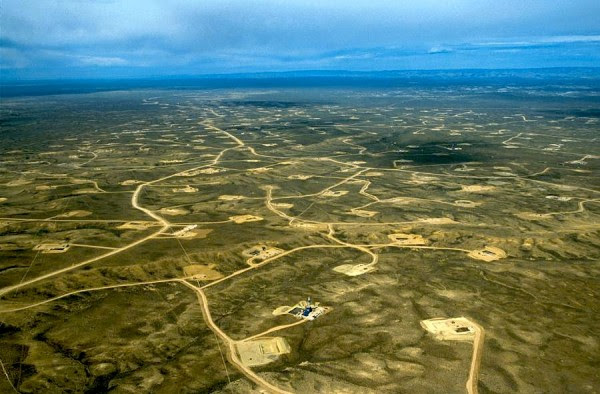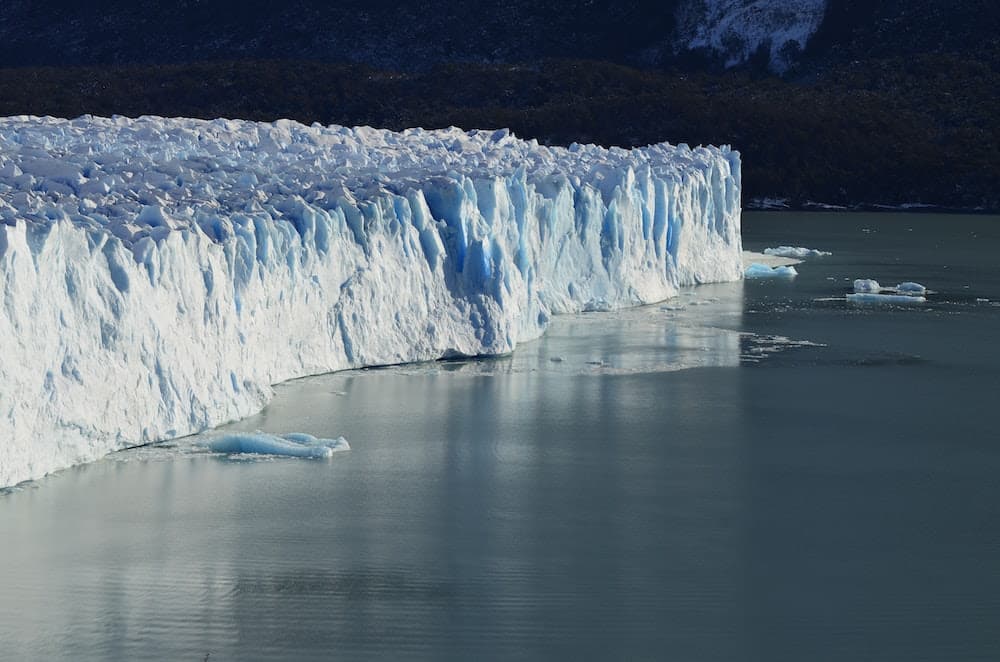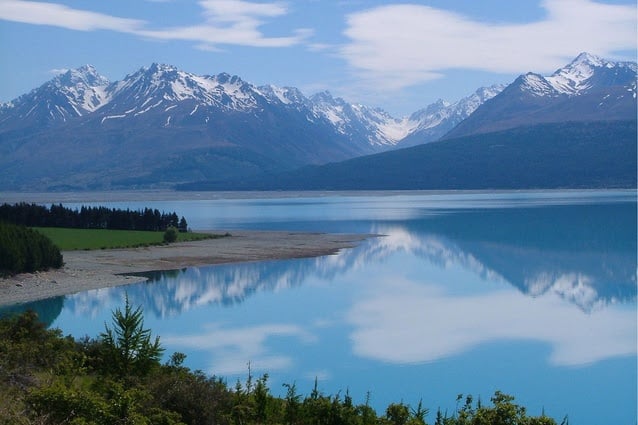
Due to the exploitation of shale rocks, American oil and gas production is exploding. And it’s causing a lot of environmental damage: the destruction of landscapes, water pollution, local earthquakes, disrupted migratory path of birds, methane emissions…
In one decade, the United States has become the king of oil. The Energy Information Administration (EIA) expects an average of 12.45 million barrels produced per day in 2019 and 13.38 in 2020. “U.S. oil production is 2.5 times greater than in 2008,” calculates Daniel Yergin, of the consulting firm IHS. So much so that the country has become the world’s leading producer, ahead of Russia and Saudi Arabia. In a few years, it should even become a net exporter.
Similarly, natural gas production has also seen its highest level in 2018, up 11% compared to 2017, itself already a record year, according to the EIA. The Under Secretary of Energy has actually come up with a new name for this export-oriented resource: “freedom gas.” According to the European Commission, U.S. liquid natural gas exports to Europe have increased by 272% since July 2018.
The explosion of shale rock development over the past 15 years or so. Shale gas, for example, accounted for 67% of dry natural gas production in 2017. And the EIA predicts that shale oil and gas will still provide half of all energy resources by 2050. Apologists for shale oil and gas development argue that it provides cleaner energy than conventional oil or coal while investing in green energy in the meantime. Environmentalists denounce its devastating consequences: the destruction of landscapes, water pollution, local earthquakes, greenhouse gas emissions… This new Eldorado also has a cost for health (cancers, premature births, impacts on the nervous and respiratory systems…) since 17 million Americans now live less than 1.6 kilometres from a gas or oil well.

American states such as Pennsylvania, Texas, North Dakota… The landscapes of several states have been disfigured by drilling. A study published in the journal Science in 2015 already estimated that millions of acres of the Great Plains of the United States and Canada were “being transformed into industrialized landscapes.” “It is the scale of this transformation that is important, as the accumulation of land degradation can have a continental-scale impact that cannot be detected when focusing on a single region,” the authors write. The report “direct loss of vegetation” to, for example, hydrocarbon road construction. Between 2000 and 2012, the equivalent of more than half of the annual grazing on public lands managed by the U.S. Bureau of Land Management was lost. On farmland, the loss is equivalent to 120.2 million bushels of wheat, or about 6% of the wheat produced in 2013 in the Midwest. The authors also estimated the impact on wildlife: disrupted migration routes, altered wildlife behaviour and mortality, and invasive plants encouraged to take hold.
There is also another environmental cost: water pollution, caused by the technique used since the late 1990s to extract oil and gas from shale, called hydraulic fracturing (or fracking). To break up the rock buried underground, a phenomenal amount of water and chemicals are injected at high pressure. Pumping this resource on-site or importing it from lakes or rivers in other states threatens drinking water supplies. Groundwater can be polluted by leaks, and wastewater storage and transportation are also potential sources of pollution. The problem has only evolved over time. A study published in Sciences Advances concluded that drilling companies used 770% more water per well between 2011 and 2016. The result: a 1,440% increase in toxic wastewater released.
By the end of 2016, the U.S. Environmental Protection Agency (EPA) itself had admitted that hydraulic fracturing could lead to polluting drinking water supplies. “Numerous pathways of contamination are now proven, and cases across the country show that these consequences are common and unavoidable,” said a 2018 report by two health professional organizations (Concerned Health Professionals of NY and Physicians for Social Responsibility). In Pennsylvania, a solvent used in hydraulic fracturing was found in drinking water wells near drilling operations. In another example, researchers found 19 contaminants – including the carcinogen benzene – in water samples collected near the Barnett Shale in Texas.
The same report compiled several studies on local earthquakes attributed to hydraulic fracturing: “A 2017 study of the Fort Worth Basin found that a recent swarm of small earthquakes in North Texas originated from long-inactive fault lines in deep rock formations where wastewater was injected; human activity is the only plausible explanation.” Also from this report, we learn that:
The danger, it is the emissions of methane (95% of natural gas) are also pointed out. This greenhouse gas is 25 times more powerful than CO2. Experts estimate that about 4% of the methane released during drilling escapes into the atmosphere. In the Barnett shale formation in Texas, methane emissions were 50% higher than estimated by the EPA. Hydraulic fracturing and its accompanying infrastructure contribute to the vast majority of methane emissions in the region, the same report notes.
There’s another danger with carbon emissions not far behind. A 2012 study by the National Oceanic and Atmospheric Administration looked at emissions from gas wells in Weld County, Colorado. The researchers concluded that these facilities produced the carbon equivalent of one to three million cars. Those emissions aren’t likely to go down anytime soon: the Trump administration has rolled back environmental regulations put in place by his predecessor, many of which attacked shale oil. Of the 300 or so pipelines under development around the world, half are in North America. In the United States alone, a Global Energy Monitor study expects these new pipelines to be responsible for 559 million tons of CO2 per year by 2040.




